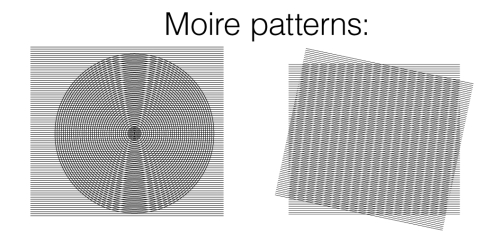Photosensitive epilepsy (PSE) is a form of epilepsy in which the patient is very sensitive to various visual stimuli such as moving patterns, blinking backgrounds, and flashing lights; in extreme circumstances, any of them can cause seizures. As you see, the list of stimuli includes some elements that can be seen in modern video games; the game screen flashes all the time when a dynamic scene is displaying. There are a lot of flares, explosions, flickering particles, blinking text alerts, backgrounds with regular patterns of texture moving quickly, and so on. This is why some game situations of poor conditions—depends on the time spent during the game session, lighting conditions, distance to the screen, sleep deprivation, emotional state, hunger, thirst, and many more—can cause a seizure. For such cases, there is a special term called Video game-induced seizures (VGS).
According to the article Stimulus Overload written by Joshua Cox (NREMT-P) and Eric T. Richardson (MD) published in Jems magazine, video game epilepsy causes seizures in the young and old. It states the following quote:
"It's known that PSE is more prevalent in people aged seven to nineteen, with more males affected because they tend to play video games more than females. Those affected report seeing an "aura" or feeling particularly odd sensations prior to the seizure"
Happily, the new technologies make the problem less vexed. Because the modern LCD displays, based on technology different from the old CRT monitors, reduce the chances of seizures but do not exclude it completely.
Although there is not much information about seizures caused by mobile games, it is better to have some thoughts about the players with PSE. First of all, try to think about all the scenes in the game with flickering elements, especially if they are large. The most problematic are the various blinking backgrounds, which can cause the stroboscopic effect. It is not necessary to remove all the flashing effects, but you need to adjust their frequency. The Epilepsy Society (visit their site at http://epilepsysociety.org.uk) informs that the potentially dangerous range lies between 3 and 30 flashes per second. Some useful information can also be found in the article Web Content Accessibility Guidelines (WCAG) 2.0 published by World Wide Web Consortium, in section Guideline 2.3 Seizures: Do not design content in a way that is known to cause seizures; there is a recommendation as follows:
"2.3.2 Three Flashes: Web pages do not contain anything that flashes more than three times in any one second period ".
So all you need to do is check your flashing elements and slow them down if their frame rate is higher than three per second. It will not affect the visual qualities of the game; moreover, it can increase the level of comfort even for players without epilepsy, because in reality nobody loves very fast flickers, as it looks annoying.

Another advice is to avoid moving fast and unexpectedly large portions of geometric patterns, especially if they have contrasting graphics; for example, graphics based on black and white stripes. Such elements can cause seizures too. There is another potential problem with the regular geometric textures; if they consist of parallel lines, there is a big chance for the moiré pattern to appear. This geometric effect always looks very inappropriate and ugly.
You should implement such changes in your game if you have some problems with flashing elements, or you should at least warn the player about the potential risk, by placing a special message on the main screen menu.
